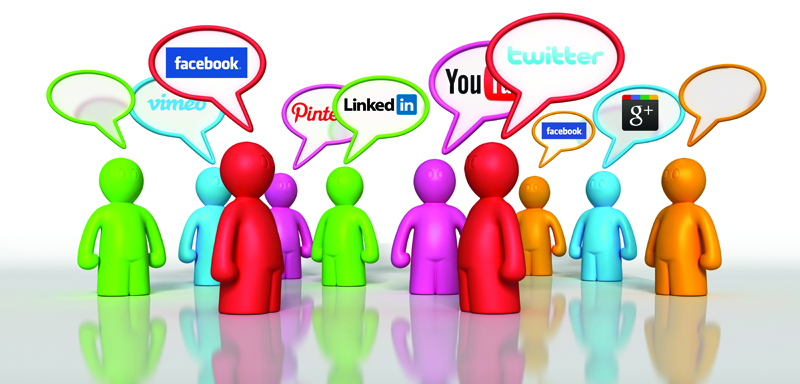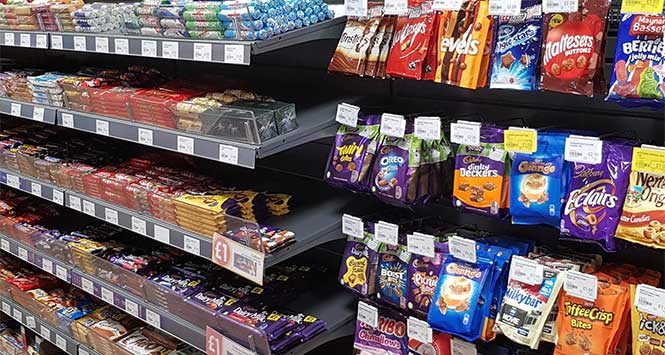by Craig McGill
Convenience retailers have been slow at picking up on the marketing potential of social networking, but as more stores invest time in popular online platforms there is now demonstrable evidence of its success, prompting SLR to give a masterclass to retailers keen to get involved.
It’s a common question: “Why would a convenience store need to be on Facebook or Twitter? It’s not like I’m going to get five million followers.” And that’s true, but it misses the point. Besides, you might not get five million followers but you might make a few more thousand pounds and I know what I’d rather have.
Social Media – Facebook, Twitter, YouTube, LinkedIn, blogs and many, many other type of sites – started off being used by everyday people, sharing items and talking to their friends. Then brands got involved, using it for promotions and PR/marketing. And it was popular but it didn’t all really take off – especially in the UK – until the rise of powerful mobile smartphones.
Quite simply, social media reminds you of everything that is done well about convenience stores – friendly, available most of hours and approachable. You can do this quicker than the large superstores who are afraid to show personality in case it offends but you are plugged in to the heart of your community, you already know what to talk about.
But here’s another reason to consider it: irrespective of you being on there, people will talk about you, your store, your prices and your offerings. Now it’s up to you if you want to engage with that and protect/enhance your reputation or bury your head in the sand.
If you want to bury your head in the sand and live in blissful ignorance, in the same way you don’t know what people say about your store at their workplaces, in the pub and elsewhere, then congratulations, you’ve reached the end of the article and can turn over to the next page. If you’re sensible, you’re still reading.
Social media, more than anything, gives you a chance to engage with local people – existing customers and potential customers – and put yourself at the heart of the community. And you can do it for free, apart from a few minutes of your time each day.
But it’s not a case of ‘If you build it, they will come.’ It, in this case, being a Facebook page or Twitter account. You need to work at it, just in the same way you’d work at conversation with customers, people you meet or people you want to chat up: it’s an ongoing, regular process.
But before you get too excited and we look at individual platforms, let’s consider some things.
Firstly, once you start this, you need to keep going. If on the likes of Twitter or Facebook, you need to be updating daily and thinking about the best times to post.
You also need to accept that it’s not about you as such, especially at the start. It’s about being helpful and offering value to others. Don’t go online every day and say “Today’s bargains are…” because you’ll just start to annoy people over time.
Things you need to consider up front include: who’s going to do this for me? What platforms will I go on to? How will I deal with bad reviews or negative opinions? What sort of information am I going to share?
None of these are big problems. With a bit of planning and personality you can get round them all.
The main thing to consider is that regardless of platform or platforms that you use, bear in mind one thing: your main purpose there is to make life easier for your customers. People go online to get information, discounts or to solve problems, so if you can provide useful, helpful information people will love you (and don’t forget the basics like posting your phone number, opening hours and so on).
What to talk about?
Look at your community for inspiration. Is your local MP, MSP, or MEP online? Can you engage with them or even take their followers? What about using your site to pass on news about local sport teams or events, dance clubs, Scouts, Brownies, schools and so on?
And there are a few reasons for trying to place yourself at the hub of your local community. Firstly, it gives people a reason to visit your website or other online profile. And that’s people spending time on your site – time they can’t spend elsewhere.
Studies have also shown that the more time people spend with another person (or brand) the more positive the feelings they have for them. The more positive the feelings they have, the more likely they are to spend money with (or on) that brand/person. And money is what you want because Facebook Likes don’t pay the mortgage.
There are other reasons for posting or linking to all this material as well – people share content. If there’s a picture of Aunty Jean on your site, you can bet that Aunty Jean is going to tell her friends and family there’s a pic of her online and they’ll also visit the site.
Those friends aren’t just the bingo club. It’s people online – people who are online and now looking at your site, increasing your digital footfall (so to speak).
On top of that, if you’re seen to be talking about others a lot, passing on interesting or useful information, people don’t mind if you then spend some time passing on sales information. The general rule is along the lines of 7:2:1 which means that for every ten posts you put out there, seven should be useful information to others (or conversational) while two can be slight plugs for what you are selling and one can be blatant.
That doesn’t mean your seven posts have to be waffle though. Far from it. With a bit of thinking, they can still be very relevant. Do you sell cake mix? Then share an online video you found of someone making a cake. Sell alcohol? Share cocktail recipes you’ve found online. And the beauty is you don’t need to thump people over the head going “AND WE SELL THIS” because people will see and know that you’re a store, you aren’t putting this online just for giggles.
Also, as well as sharing the material your community is putting online, take material from your suppliers. Sell Whyte & Mackay whisky? Use their tweets (@whyteandmackay) or the YouTube videos of their Master Blender Richard Paterson in your own streams.
Planning and consistency
Plan your content and be consistent. For example, Sundays could be about health food and tips as people recover from the weekend’s excesses. Fridays could be about off-trade offers to get people into the party mood. And so on.
Your content can also be quirky. You could post once a week (or run a blog) on funny things you overhear your customers saying. Other ideas for content: review the convenience stores you see online – how realistic are the shops we see in TV shows?
And when it comes to telling people about your stock, tell them what’s selling well. Studies in the states have shown that FOMO – Fear of Missing Out – can boost sales by up to 20%. So if you point out to people that there’s been a rush on wine, milk or something else, it can trigger the need for them to buy it. Similarly, it may just jog their memory that they need to pick stuff up from the local store. In a recession, surely every little helps?
But one thing to remember: if you do have any form of online presence – blog, website, Facebook, anything – make sure people know about it. Put the addresses on receipts, posters, bags, banners. Let people know where to find you. Digital doesn’t live in a vacuum, it wants to be social. Like people.
[next_message styles=”4″ title=”Most popular platforms“]- Twitter: Use sites like WeFollow and Twellowhood to find your local tweeters. Use a site like Hootsuite or Tweetdeck to set up lists of local Twitter followers, local press, customers and so on. You can also schedule your tweets for your whole day in one go. Do that in the morning and then you only have to spend a few moments at lunchtime and later in the day to keep up with what relevant people are doing/saying.
- Facebook: Most updates only have a shelf life of eight hours so have a few updates ready each day. Use the Schedule Post facility. Your first goal on Facebook is to get 10 fans. Do that and congratulations, you’re in the top 42 million pages. Get 1000 fans and you’re in the top 20% of Facebook pages. People now check Facebook while in bed, before having their morning cigarette, so get a message up and online early to catch their attention. Similarly time your postings in the afternoon to catch the lunchtime and hometime crowds.[/next_message]
Factfile
Craig McGill admits that he doesn’t know his EPOS from his elbow but he does know social media, having done it for large and local brands across the UK and abroad. You can find him on Twitter at @craigmcgill or email at craig@contentlymanaged.com





